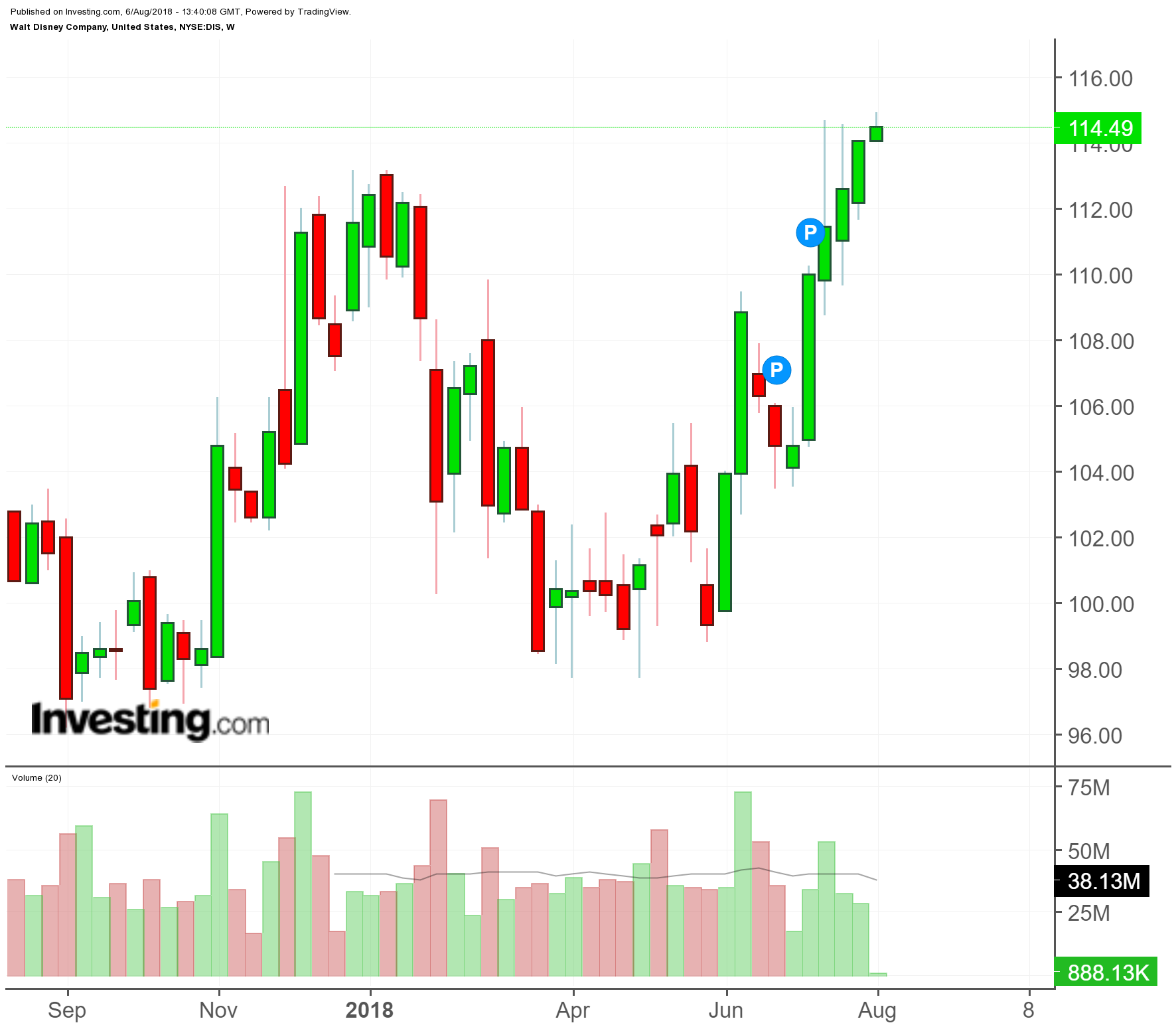When Walt Disney (NYSE:DIS) reports Q3 2018 earnings Tuesday, it has a lot to make its shareholders excited.
Analysts, on average, expect 26% jump in fiscal third-quarter earnings to $1.95 a share on $15.34 billion in revenue.

The entertainment giant just concluded a $52.4 billion deal to acquire 21st Century Fox’s media assets, arming the House of Mouse with tons of ammunition to take on its rivals.
After a long bidding war with Comcast (NASDAQ:CMCSA), Disney has no major hurdle left to cross before it takes over some of the Rupert Murdoch’s priciest assets, including Fox’s TV and film production studios that produced hits such as “Avatar” and “Deadpool,” as well as the National Geographic and FX networks. The deal will also raise Disney’s interest in video streaming service Hulu to 60%.
The Fox deal was part of CEO Bob Iger’s strategy to arrest a slide in revenue at a time when Disney’s biggest revenue-generating units -- television and the ESPN sports network -- were losing viewers and advertising dollars to internet disruptors such as Netflix (NASDAQ:NFLX).
Now, investors are hopeful about Disney’s ability to defend its turf. With the addition of Fox's assets in the coming months, Disney will have a much stronger competitive advantage in film, television and theme parks to make up for the declining TV revenue.
That optimism is reflected in Disney’s share price recently. It has gained 14% during the past two months, breaking out of a sluggish three years when it hardly budged.
Disney Rules Movies, But Needs A Strong Streaming Product
Right now, Disney dominates the box office. It has a 35% share of the domestic box office this year, helped by top releases such as “Black Panther” and “Incredibles 2,” according to a Bloomberg report.
Disney’s third-quarter numbers will likely be bolstered by these successes.
But we think it’s still too early to expect a significant reversal at Disney’s media networks unit, which has been a major drag on its share price. The business still remains the company’s major breadwinner, accounting for about half of the company’s operating revenue. Disney’s successful conclusion to its Fox deal and its foray into the streaming video business are the two main growth drivers for this entertainment heavyweight.
The biggest challenge for Disney is to package its diversified entertainment assets in a way that they could win viewers back from Netflix’s $11-a-month app. We might get some insight on this from the CEO Bob Iger when he speaks in a post-earning conference call.
